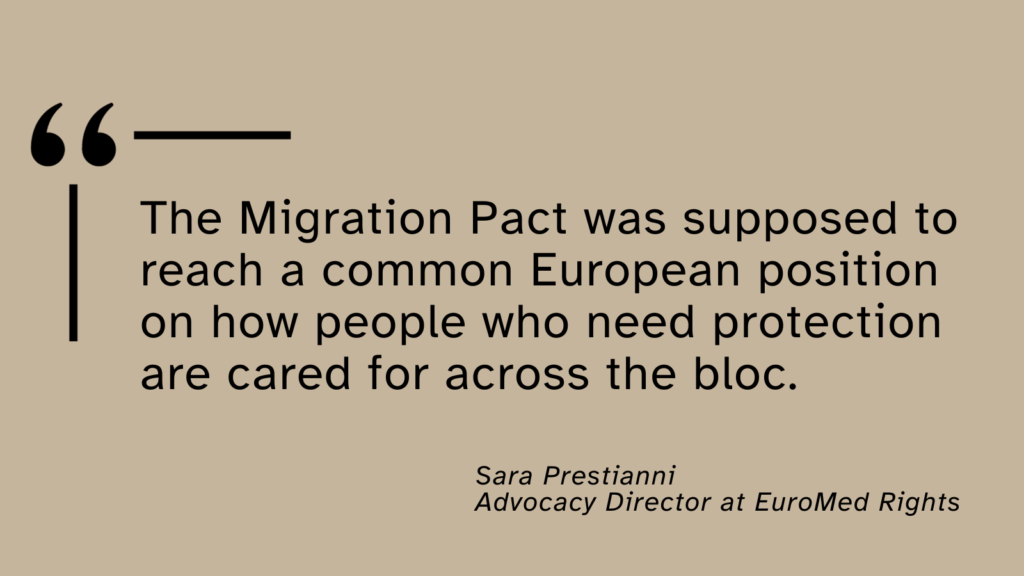European legislators are considering new policies that could see children as young as six subjected to immigration detention and accelerated border procedures, multiple sources close to negotiations have said. Human rights organisations including Save the Children, PICUM, EuroMed Rights and Border Violence Monitoring Network have strongly criticised the proposals. The revelations were made by negotiators representing the Spanish Presidency of the EU Council during trilogues on Tuesday 5 December.
This would mark a dramatic break with current proposals, which already allowed for children over the age of twelve to be placed in border procedures, and follow linked plans to fingerprint children aged six and over through Eurodac. The original proposal already failed to comply with the internationally recognised definition of children, which does not allow any discrimination between persons under eighteen in the enjoyment of their fundamental rights and procedural guarantees.
It comes as a paper leaked on Wednesday night revealed a no-compromises mood from the Spanish Presidency as it revealed its position on the controversial New Pact on Migration and Asylum. The Presidency hopes to seal political deals on the Pact by Christmas.
The new document:
- Resolves to ignore parliamentary and human rights monitors’ concerns about widespread racial profiling and screening across the EU (not just at borders). The leaked paper states: “Despite the Parliament’s strong opposition, mainly due to concerns on potential discrimination based on race, the Presidency remains firm on maintaining this provision that is a strong priority for the Council.”
- Resolves to preserve a principle called the “legal fiction of non-entry”, whereby individuals who set foot in a processing facility– which can be anywhere in the EU – aren’t automatically regarded as being on EU soil, even though they technically are, because their presence has not been authorised. This allows the lowering of standards, such as more swift border procedures.
- Preserved the principle of accepting relocated refugees and providing funding to third countries for border externalisation as measures “of equal value.”
Legislators and civil society organisations say that the effects of these policies, combined with proposals being discussed on the immigration detention of children, would give a green light to six-year olds being detained and deported into danger, and continue to call for an unconditional exclusion of children from border procedures.
Willy Bergogné, Europe Director at Save the Children, said:
“European leaders are debating the age at which children should be locked up at EU borders. Their alleged crime: seeking protection in a region that prides itself on exporting human rights to the world. Europe should stand as a haven, protecting and welcoming children instead of detaining and deporting them.”
“Our asylum system must work to safeguard children with a Migration Pact that ensures, not threatens, children’s rights. This means no child detention or deportation, swift family reunions, and all migration decisions made in children’s best interests.”
Michele LeVoy, Director of the Platform for International Cooperation on Undocumented Migrants (PICUM), said:
“The new move to detain and deport children as young as six is the product of a series of rushed last-minute deals. This is a low blow to internationally-recognised child rights which stipulate that no child should be put in immigration detention. Countries around the world have made a commitment to work towards ending immigration detention of children. This cannot be how Europe is governed.”
Hope Barker, Senior Policy Analyst at Border Violence Monitoring Network, said:
“This new dystopian proposal to lock up six year olds, announced at the eleventh hour, is the iceberg tip of a humanitarian disaster.”
“The New Pact strips down rights and liberties for people across Europe regardless of their migration status. It’s ill-considered, won’t work, and flies in the face of Europe’s professed values. Negotiators should take it back to the drawing board.”

